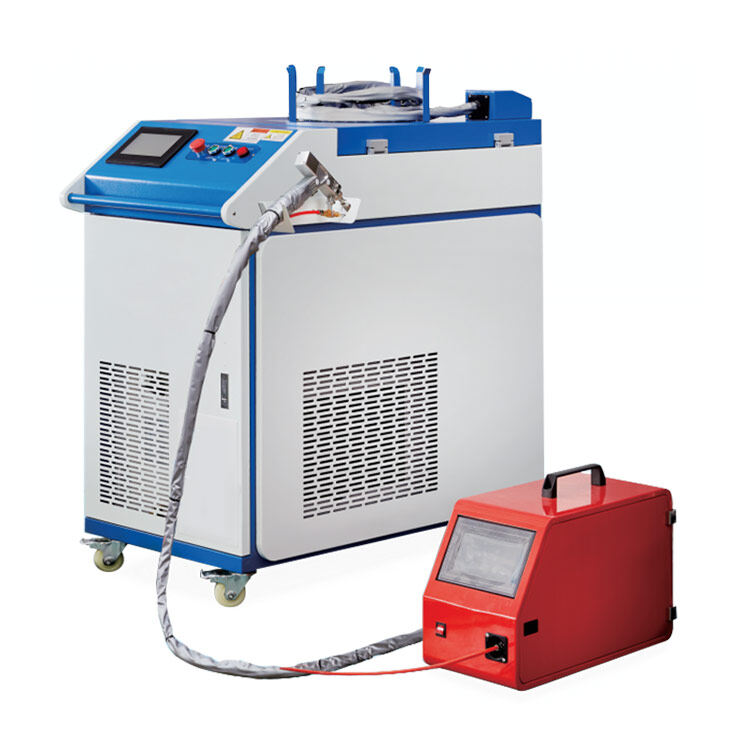Email format error
Email cannot be empty
Email already exists
6-20 characters(letters plus numbers only)
The password is inconsistent
Email format error
Email cannot be empty
Email does not exist
6-20 characters(letters plus numbers only)
The password is inconsistent


Revolutionizing Mold Repair with Laser Welding Technology
In the dynamic landscape of industrial manufacturing, the integrity of molds stands as a linchpin for both product quality and production efficiency. Conventional methods of mold repair often struggle to meet the demands of precision and speed required by modern industries. However, the emergence of mold repair laser welding machines heralds a new era characterized by unparalleled efficiency and accuracy in mold maintenance.
Understanding Mold Repair Laser Welding Machines
Mold repair laser welding machines epitomize the synergy between state-of-the-art laser welding technology and the specialized needs of mold repair. These sophisticated machines harness focused laser beams to execute precise and targeted welds on damaged sections of molds, seamlessly integrating new material and restoring structural integrity with surgical precision.
The Advantages of Laser Welding in Mold Repair
1. Precision Welding: Laser welding offers an unmatched level of precision, empowering repair technicians to address even the minutest cracks or imperfections in molds with utmost accuracy, thus ensuring optimal performance and longevity.
2. Minimal Heat Affected Zone (HAZ): Unlike traditional welding methods, laser welding produces minimal heat, mitigating the risk of thermal distortion and preserving the original properties of the mold material, thereby maintaining the integrity of the repaired mold.
3. Versatility: The machines boast compatibility with a diverse array of mold materials, including but not limited to steel, aluminum, and various alloys, rendering them indispensable across a myriad of industrial applications.
Applications of Mold Repair Laser Welding Machines
1. Automotive Industry: In the automotive sector, characterized by stringent quality standards and relentless pursuit of efficiency, the machines play a pivotal role in preserving the integrity of critical components such as engine parts and body panels, thereby ensuring the durability and safety of vehicles.
2. Consumer Electronics: From cutting-edge smartphones to innovative home appliances, manufacturers of consumer electronics rely on the machines to safeguard the intricate molds used in the production process, guaranteeing the flawless functionality and aesthetic appeal of the end products.
3. Medical Device Manufacturing: The medical industry mandates uncompromising standards of quality and precision. Mold repair laser welding technology empowers manufacturers to uphold these standards by meticulously repairing molds used in the production of life-saving medical devices, thus ensuring compliance with regulatory requirements and safeguarding patient safety.
Key Features of Modern Mold Repair Laser Welding Machines
1. Advanced Control Systems: Modern laser welding machines boast intuitive control interfaces that enable operators to fine-tune welding parameters with unprecedented precision, thereby facilitating optimal outcomes for each repair endeavor.
2. Integrated Cooling Systems: To preempt overheating of molds during the welding process, many laser welding machines are equipped with integrated cooling systems that meticulously regulate temperature, thereby minimizing thermal stress and safeguarding the structural integrity of the repaired molds.
3. Real-time Monitoring: Certain models are furnished with sensors that furnish real-time feedback on weld quality, empowering operators to make instantaneous adjustments as necessitated by the exigencies of the repair process, thereby ensuring consistently impeccable results.
Case Studies: Real-world Applications of Mold Repair Laser Welding Technology
1. Case Study 1: Automotive Component Repair: A preeminent automotive manufacturer encountered production delays stemming from cracks in the molds employed for casting engine components. Leveraging a laser welding machine, the manufacturer swiftly rectified the issue, thereby minimizing downtime and fortifying production schedules.
2. Case Study 2: Aerospace Tooling Restoration: An aerospace engineering firm confronted surface defects in crucial tooling molds employed for fabricating aircraft components. Harnessing the power of mold repair laser welding technology, the firm meticulously restored the molds to pristine condition, ensuring compliance with exacting quality standards requisite for aerospace applications.
Future Trends in Mold Repair Technology
1. Integration of AI and Machine Learning: The inexorable advancement of artificial intelligence (AI) and machine learning holds promise for the integration of intelligent features into the laser welding machines, facilitating automated optimization of welding parameters and augmenting overall efficiency.
2. Enhanced Portability and Accessibility: Future iterations are poised to prioritize portability and user-friendliness, thus facilitating on-site repairs and diminishing dependence on centralized repair facilities, thereby ushering in an era of unprecedented accessibility and convenience.
Conclusion
Mold repair laser welding machines represent an epochal leap forward in industrial maintenance technology, epitomizing unparalleled levels of precision, efficiency, and versatility in mold repair applications. As industries evolve and embrace innovation, these groundbreaking machines will undoubtedly emerge as indispensable assets, ensuring the longevity, reliability, and continued prosperity of critical manufacturing processes.

